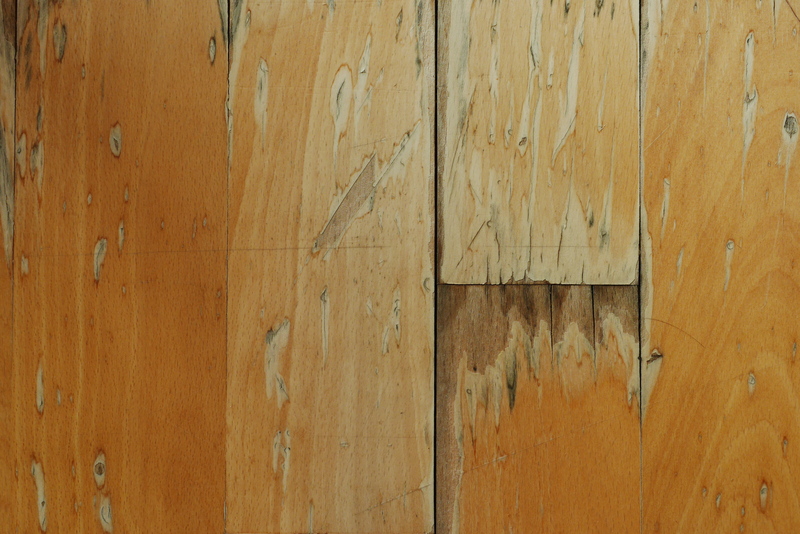A Comprehensive Approach to Mold Prevention in Bathrooms
Posted on 18/08/2025
A Comprehensive Approach to Mold Prevention in Bathrooms
Mold in bathrooms--those stubborn black, green, or sometimes even pink patches--can be a persistent and unhealthy problem in any home. Bathrooms, by their very nature, provide the ideal environment for mold: high humidity, frequent moisture, and often limited ventilation. If left unchecked, mold growth can lead to unsightly stains, unpleasant odors, structural damage, and even health issues for you and your family. This comprehensive guide explores everything you need to know about preventing mold in bathrooms, so you can enjoy a cleaner, healthier space.
Why Is Mold Prevention Crucial in Bathrooms?
- Health Risks: Mold spores can cause respiratory problems, allergies, asthma flare-ups, skin irritation, and more serious issues in people with compromised immune systems.
- Structural Damage: Mold feeds on organic materials including drywall, grout, wood, and wallpaper glue, leading to costly repairs if left for too long.
- Aesthetic Impact: Mold leaves behind stains and a musty scent, undermining the comfort and cleanliness of your home.
Given these potential issues, bathroom mold prevention should be a priority in every household.

Understanding How Mold Grows in Bathrooms
Mold is a type of fungus that thrives in moist, warm, and low-light environments--precisely the conditions found in most bathrooms. Once spores find a suitable spot (like grout lines, ceilings, behind toilets, and under sinks), they can multiply rapidly. Moisture is the key factor, whether from leaky plumbing, poor ventilation, or everyday showering and bathing.
- Temperature: Mold grows best in temperatures between 77?F and 86?F (25?C - 30?C).
- Humidity: Levels above 60% can accelerate growth.
- Nutrients: Soap, skin cells, hair, and dust can provide food.
Understanding these basic requirements is your first step toward comprehensive mold prevention in bathrooms.
Practical Strategies for Bathroom Mold Prevention
1. Ensure Proper Ventilation
Ventilation is the cornerstone of all meaningful bathroom mold prevention efforts. Without moisture control, other strategies are likely to fail.
- Use Exhaust Fans: Always run an exhaust fan during and for at least 30 minutes after showers and baths. Choose a fan rated for your bathroom size and make sure it vents outside.
- Open Windows and Doors: Whenever possible, crack a window open or leave the door ajar after using hot water. This helps reduce humidity and allows fresh air in.
- Consider a Dehumidifier: In particularly damp or windowless bathrooms, a portable dehumidifier can work wonders.
2. Address and Repair Leaks Immediately
Hidden leaks are a major cause of bathroom mold growth. Watch for signs like bubbling paint, musty smells, or sudden discoloration. Areas to check include:
- Under Sinks: Worn-out faucets, pipe joints, and seals can leak slowly.
- Around Toilets: Old wax rings or loose connections can cause leaks at the base.
- Behind Tubs and Showers: Cracked grout or tile, or failed caulking, can allow water to infiltrate walls.
Fast action can prevent a small issue from becoming a major moldy mess.
3. Clean and Dry All Wet Surfaces Daily
Mold needs only 24 to 48 hours of damp conditions to take hold. After showering or splashing water, quickly dry susceptible surfaces:
- Wipe down tiles, walls, and floors
- Squeegee shower doors or curtains
- Hang towels and bathmats to dry
Daily diligence, though simple, is one of the most effective steps in long-term mold prevention in bathrooms.
4. Use Mold-Resistant Materials
During renovations or new construction, invest in mold-resistant building materials for bathrooms:
- Mold-Resistant Drywall (Greenboard): Specially formulated to withstand damp conditions.
- Mold-Resistant Paint: Look for paints and primers labeled as "mildew-resistant."
- Non-Porous Tiles and Grout Sealers: Ceramic or porcelain tiles and regularly resealed grout help keep moisture on the surface, where it's easy to clean.
These upfront investments will make future prevention efforts far easier.
5. Limit Humidity with Smart Bathroom Habits
Everyday habits can make or break your battle against bathroom mold:
- Avoid leaving damp towels, loofahs, and sponges piled up
- Hang up bath toys, mats, and robes to dry
- Keep shower doors or curtains slightly open to help air circulate
- Store toiletries in a way that lets shelves and ledges dry quickly
Little changes in routine can create a big difference in your mold defense.
Advanced Mold Prevention Techniques for Bathrooms
Regular Deep Cleaning and Surface Disinfection
A detailed cleaning schedule is vital for ongoing mold avoidance:
- Clean tiles, grout, and corners with a mixture of vinegar or a commercial mold cleaner every week
- Use a toothbrush for difficult grout lines or tight spots
- Spray a mild hydrogen peroxide solution to kill lingering spores
- Wash shower curtains and liners (use machine-washable versions if possible)
Never let soap scum, hair, or residue accumulate, as these provide mold nutrients.
Upgrade to Mold-Resistant Fixtures
Modern bathroom fixtures are available in styles designed to reduce moisture retention. Consider:
- Wall-Mounted Toilets and Vanities: Simplifies cleaning around the base, reducing concealed dampness
- Open-Shelf Designs: Minimize shadowy, enclosed spaces where moisture lingers
- Seamless Shower Bases: Fewer joints means fewer places for water to seep in unnoticed
These improvements can be particularly worthwhile in high-risk or previously affected bathrooms.
Maintain Your Bathroom's Exhaust Fan
Even the best fan won't help if it's clogged or underpowered. To ensure effective bathroom ventilation for mold prevention:
- Clean the fan grill every six months to prevent dust build-up
- Replace old fans with high-CFM models for faster moisture removal
- Install a humidity sensor switch so the fan turns on when needed
Tip: Test your fan's power by holding a piece of tissue to the vent grill--the fan should easily hold it in place.
What to Do If You Discover Mold in Your Bathroom
If you spot black or colored growth on bathroom ceilings, walls, around the tub, or under the sink, address it right away to prevent spreading:
- Assess the Area: Small patches (<10 sq ft) can usually be treated by homeowners. Larger infestations may require professional mold remediation.
- Clean Up: Wear gloves and a mask. Use a commercial mold cleaner or make a DIY solution with 1 cup bleach in 1 gallon of water. Scrub affected surfaces and dry thoroughly.
- Fix Moisture Problems: Repair any leaks or ventilation issues that contributed to the outbreak.
- Monitor for Recurrence: Keep a close eye for new growth over the next several weeks.
Never paint or caulk over active mold--always remove it thoroughly first!
When to Call a Professional
- If the mold covers more than 10 square feet
- If it's returned several times despite your efforts
- If you, your family, or houseguests experience persistent cold-like or allergic symptoms
Professionals have the tools and knowledge to address hidden mold, contaminated insulation, drywall, or stubborn strains like black mold (Stachybotrys chartarum).
Preventing Mold in Specific Bathroom Zones
Showers and Tubs
- Use a squeegee after each use
- Seal grout and caulking every 6-12 months
- Avoid leaving bottles or soap dishes on ledges--these trap water underneath
Sinks and Vanities
- Clean backsplash and counter corners regularly
- Take apart and dry faucet aerators occasionally
- Watch for leaks under the sink--a culprit for hidden mold
Toilet Area
- Check for leaks from the base, supply line, and tank
- Keep the area around the toilet dry
Floors and Ceilings
- Wipe up spills or puddles promptly
- Fix ceiling leaks (from above bathrooms or roofs) immediately

Frequently Asked Questions About Bathroom Mold Prevention
Q: Can you completely eliminate bathroom mold forever?
A: While it's impossible to eradicate all mold spores from the air, a proactive, comprehensive bathroom mold prevention plan can keep visible growth at bay for the long term.
Q: Are natural remedies (like vinegar and baking soda) effective?
A: Yes, for small patches and regular cleaning, vinegar and baking soda can work well, but stubborn or recurring mold often requires stronger cleaning agents.
Q: How often should I clean my bathroom to prevent mold?
A: Weekly deep cleaning and daily quick drying of wet surfaces are ideal for maximum mold prevention in bathrooms.
Conclusion: Your Mold-Free Bathroom is Within Reach
Combating mold in bathrooms isn't about a single action--it's a blend of vigilant habits, smart design choices, and consistent maintenance. By understanding the conditions that encourage mold, implementing ventilation and drying routines, using modern mold-resistant materials, and staying alert for leaks, you can drastically reduce the risk of mold development in your bathroom.
Remember: The best bathroom mold prevention is a comprehensive, proactive approach. With these effective strategies, you'll enjoy a fresh, beautiful, and healthy bathroom for years to come.
- Prioritize ventilation and moisture control
- Clean and dry susceptible areas regularly
- Invest in mold-resistant materials and fixtures for long-term defense
Take action today--your bathroom (and your family's health) will thank you!



